
Mammals Around Las Vegas, Wildlife Around Las Vegas
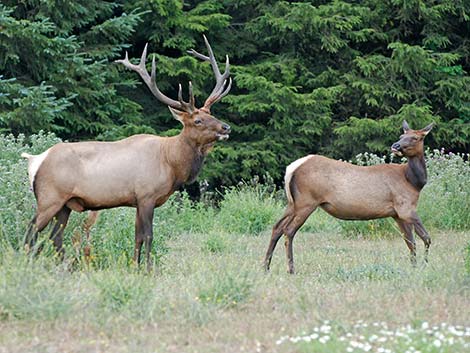 Male (left) and female (right) elk |
Description: Elk (Cervus canadensis), also known as Wapiti, are very large, deer-like creatures. Males stand to 5-ft at the shoulder and weigh up to 1,000 pounds. Antlers are very long (to 65 inches) and wide (spread to 74 inches). Color is tan overall, with white on the rump and chestnut on the head and neck. Antlers are shed in late fall. Females are smaller (to 600 pounds) and lack antlers. Taxonomy: Order: Artiodactyla, Family: Cervidae. Recent research indicates that North American elk are a species separate from European Red Deer (Cervus elaphus). Diet: Elk feed in forest and forest-edge habitats, primarily grazing on grasses and forbs, but they also browse on leaves and bark. |
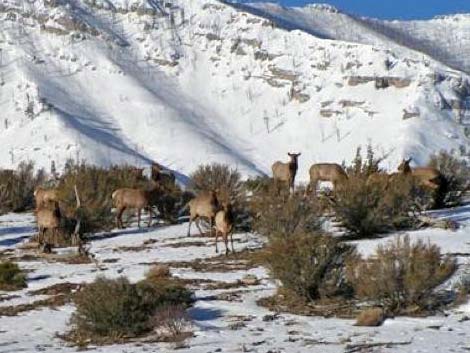 Elk at Cold Creek, NV, during winter |
Habitat: Open shrubby forests, mountain meadows in summer; lower elevations (foothills, valleys) during winter. Ranging during the year from the Pine-Fir Forest (Canadian Life Zone) down to the Mojave Desert Scrub (Upper Sonoran Life Zone). Range: Widely scattered throughout western North America with populations centered in the Rocky Mountains and along the Pacific Coast from Washington south to northern California. Comments: A herd of rocky mountain elk was introduced into the Cold Creek area in the Spring Mountains in the 1950s where a small herd is managed by the Nevada Division of Wildlife for hunting. In recent years, the herd suddenly spread southward, at least as far as Mt. Potosi. |
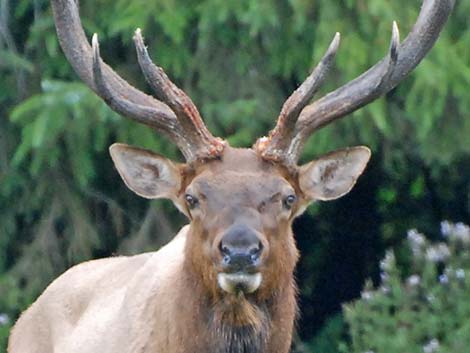 |
If you were a tasty shrub or a big, fat flower, this might be the last face you ever see! |
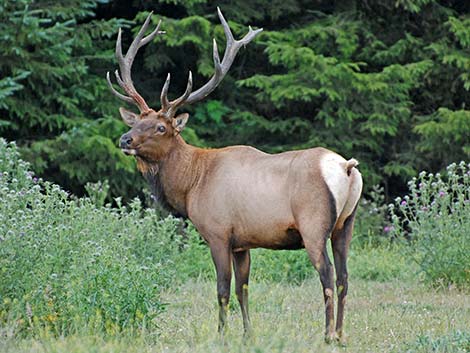 Male elk |
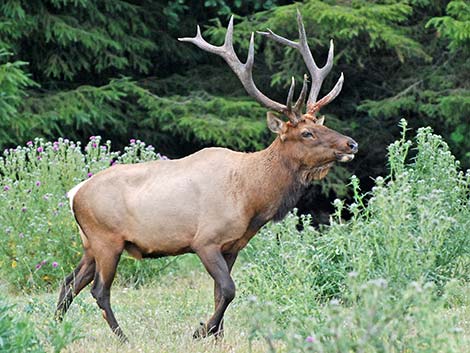 Male elk |
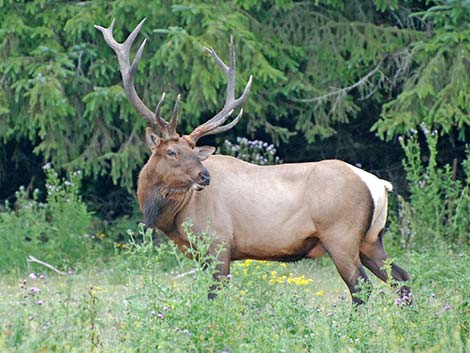 Male elk |
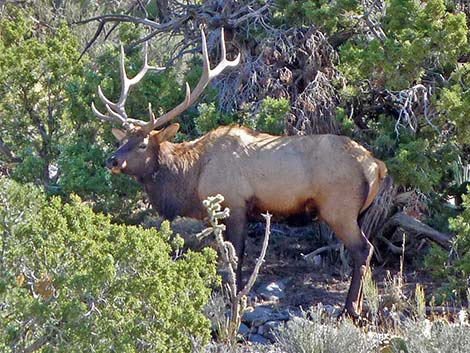 Male elk on the west side of the Spring Mts. in Lovell Canyon |
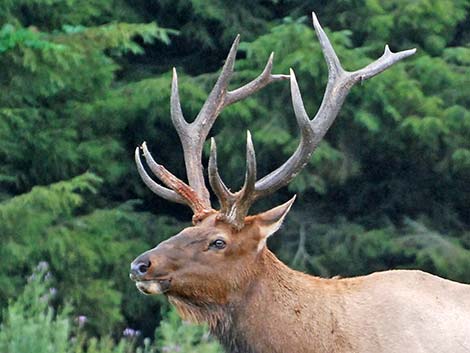 Male elk |
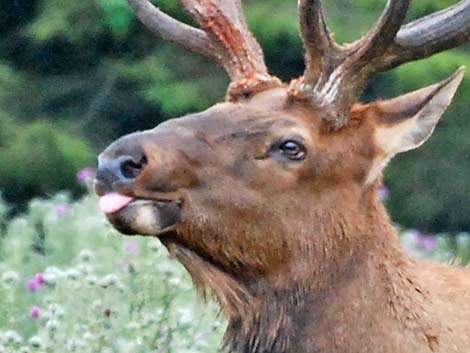 I guess we know what he thinks of me! |
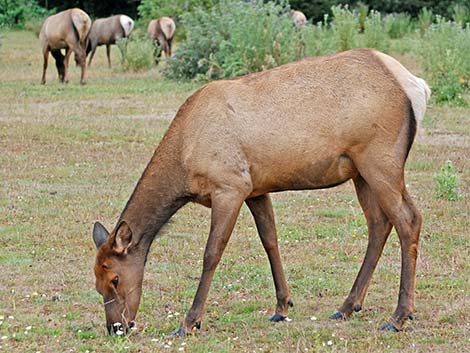 Female elk |
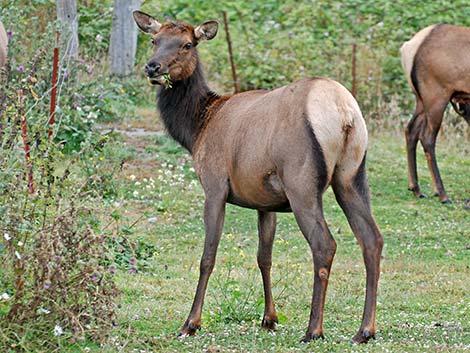 Female elk |
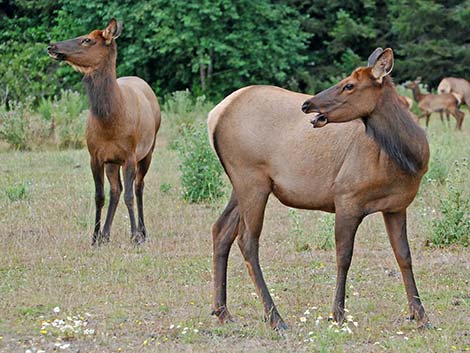 Female elk |
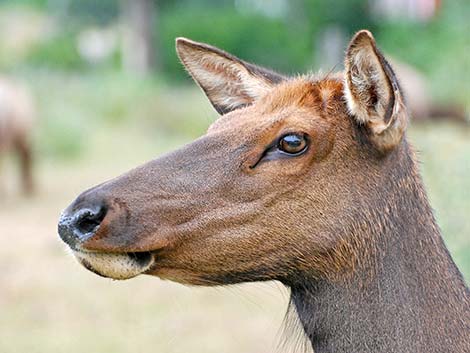 Female elk |
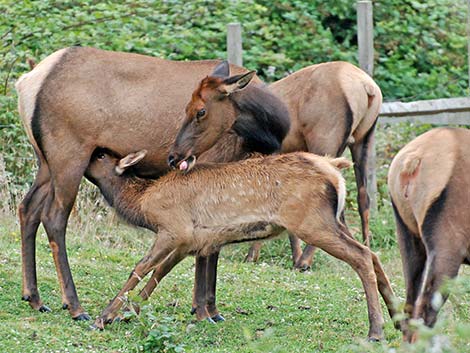 Elk female nursing a calf and giving it a bath at the same time |
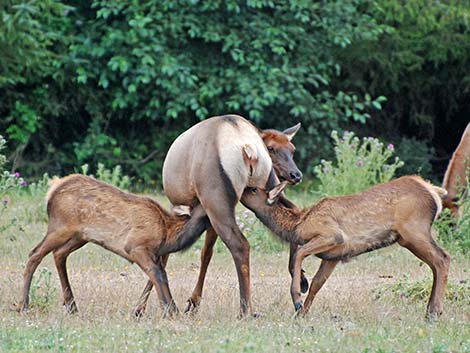 Elk female nursing two calves |
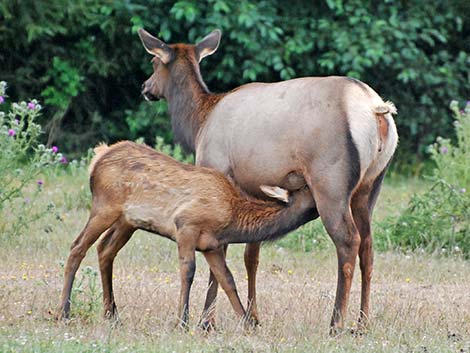 Elk female nursing one calf |
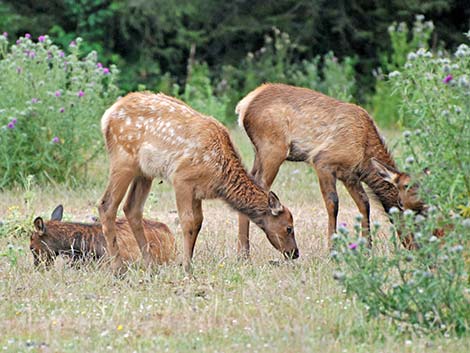 Elk juveniles; note the white spots |
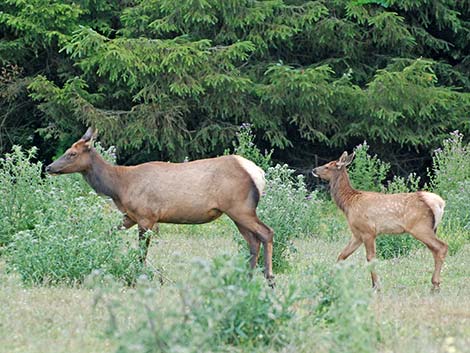 Female and juvenile elk |
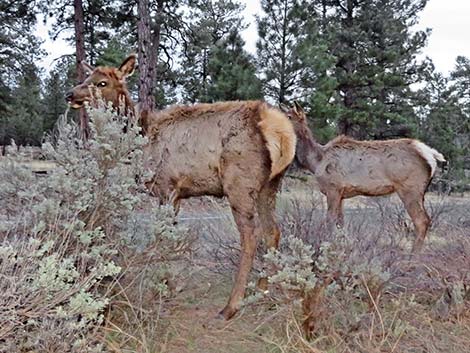 Elk along road in Grand Canyon National Park |
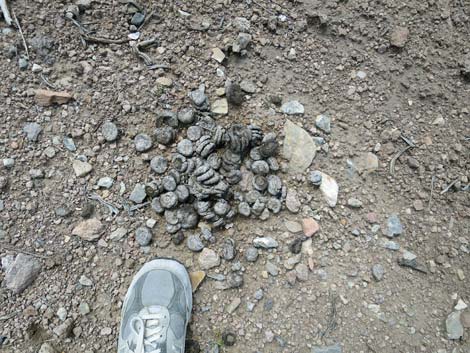 Elk scat |
 Elk scat |
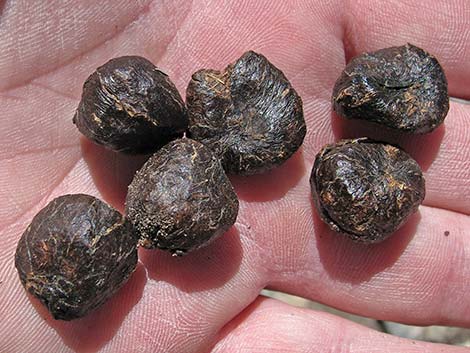 Elk scat |
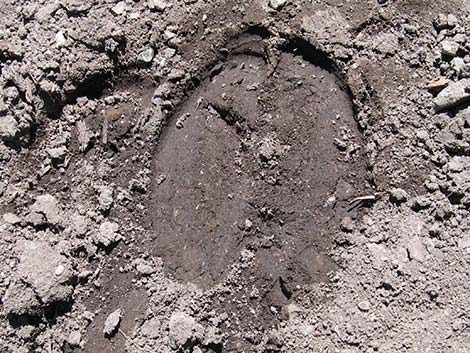 Elk hoof print |
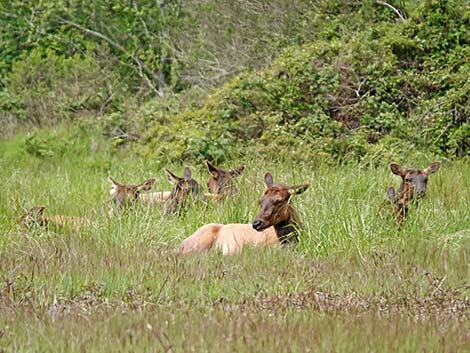 Roosevelt Elk (Cervus canadensis ssp. roosevelti) |
 Roosevelt Elk (Cervus canadensis ssp. roosevelti) |
 Roosevelt Elk (Cervus canadensis ssp. roosevelti) |
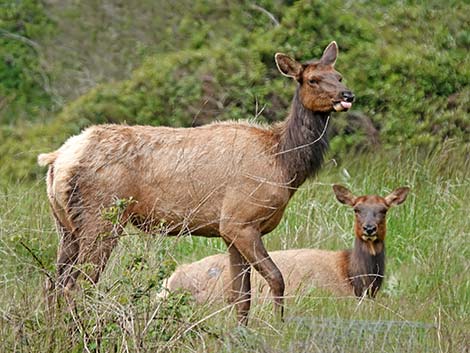 Roosevelt Elk (Cervus canadensis ssp. roosevelti) |
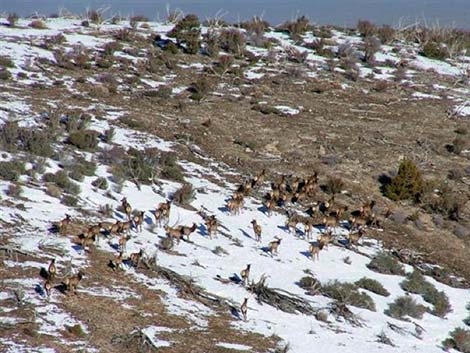 Elk at Cold Creek, NV, during winter |
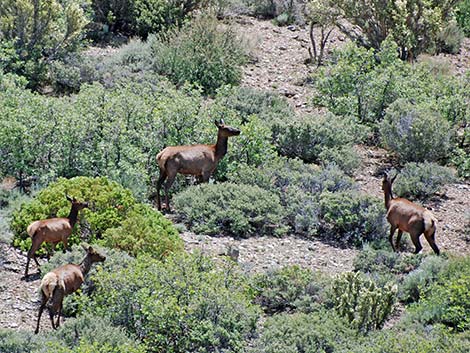 Elk at Cold Creek |
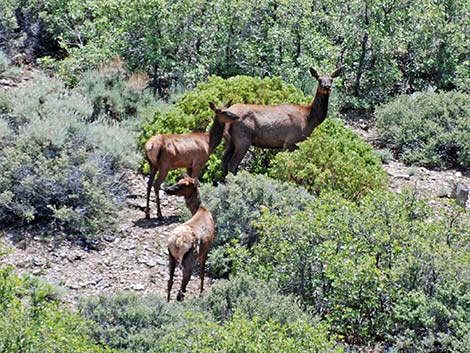 Elk at Cold Creek |
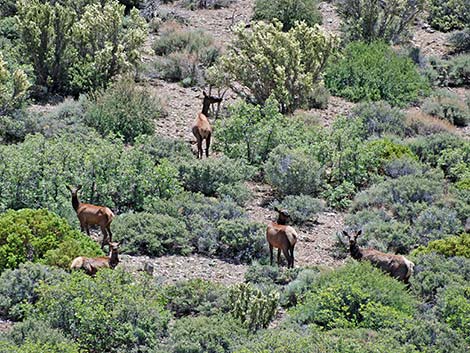 Elk at Cold Creek |
Note: All distances, elevations, and other facts are approximate.
![]() ; Last updated 231229
; Last updated 231229
| Mammals Around Las Vegas | Wildlife Around Las Vegas | Glossary | Copyright, Conditions, Disclaimer | Home |